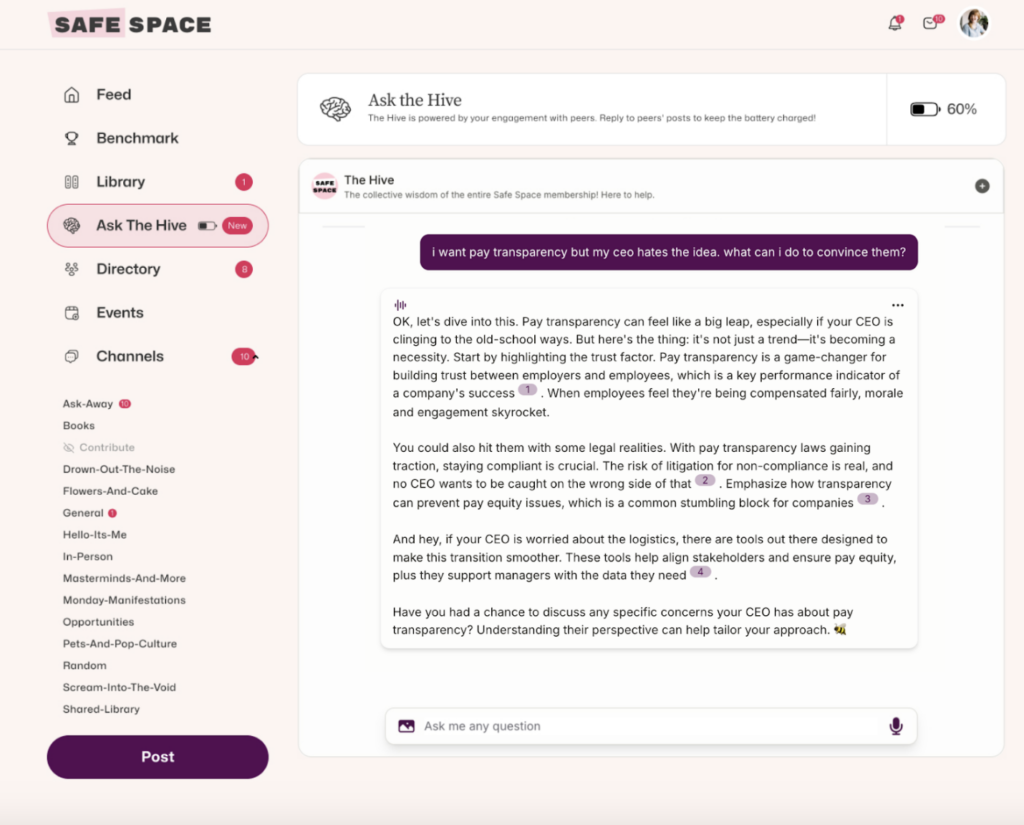I wish I had a crystal ball to tell me what to anticipate for this next year. Everyone has their predictions but if the last 3 years in HR have taught us anything it is to expect the unexpected.
While every day can feel like a fresh and unique challenge, that does make our job a bit more difficult.
Ideally, our role would be proactive rather than reactive. But in the world of HR and People, some days that can feel impossible. I often end up in dumpster firefighter mode than thoughtful strategic planner mode.
Spoiler alert: when HR/People teams don’t have time to strategically plan the impact is felt throughout the organization. Initiatives aren’t fully thought out, balls are dropped, and the employee experience suffers.
I want to help you shift to proactive mode by outlining 3 themes that will emerge in 2023 and how to tackle them:
- A focus on employee wellbeing
- Retaining our employees
- A tough talent market
#1: A focus on employee wellbeing:
The state of work feels bleak some days. Morale is down, attrition is up, employees are quitting in waves, engagement is down, and layoffs haven’t yet stopped, not to mention the state of the economic market. The ramifications from 2022 are going to show up in a big way in 2023.
Employees are feeling the impact of all the things and naturally it’s impacting their wellbeing and happiness.
In 2023 there will be a focus on:
- How to better support employees
- Continued explorations of creative solutions (4-day workweek anyone??)
- The importance of mental health and wellbeing
- Ensuring hybrid work is working
- Inclusion and wellbeing
If you’re wondering, how the hell am I going to tackle all of this? My next few issues are going to be entirely focused on the many facets of employee wellbeing. You know I always got you!
In a reactive state you would learn that most of your employees are burned out and then make a plan to tackle it. Don’t wait until it gets there!
The proactive approach to employee wellbeing includes:
Start the year right – with a survey! Take stock of how your employees are feeling at the start of the year. Include a question like what programs would you like to see this year to help understand what employees want/need from their employer!
To note: Historically, employees are usually more optimistic at the start of the year. You’ll still want the data to track trends over time. The key here is doing surveys regularly to capture trends!
Write a company AND team goal to ensure employee wellbeing is a focus and being measured. It should be a company level goal because focus on employee wellbeing will only foster a more inclusive and engaged workforce. And we all know the benefits of that!
Invest in tools that support employee wellbeing. I love what Kona is doing to normalize daily check-ins on mental health and wellbeing. The data is so powerful around the impact it can have on the employees. Don’t sleep on this!
#2: Retaining current employees:
With layoffs leaving organizations decimated there will be a focus on how to retain the remaining employees. The aftermath of layoffs have major implications for organizations. Namely, retention!
JOIN 150K+ HR LEADERS
Get insights, learnings, and advice on how to build companies and cultures that people actually love.
No spam. Unsubscribe any time.
It’s kind of hard to want to stay somewhere that has to do a layoff. It can kill morale and also make employees question their future. The current economic situation has employees seeking stability.
Jumping ship to another company might get them that. But don’t let them!
In a reactive state, you would experience a wave of departures before you started thinking about retaining employees.
The proactive approach to retaining employees:
Build a community. The data will tell you that employees are less likely to leave a company if they feel like they belong and have a community. Working in hybrid environments can be isolating so thinking of ways to connect your employees in their communities will be powerful for retention. Build a way for employees to meet each other and engage like randomly pairing them up for coffee or assigning buddies when new employees start!
Collect and assess data in exit interviews. I’m always baffled when teams don’t do exit interviews or analyze the data there! There’s so much you can learn from asking a departing employee about their experience. Also SUPER helpful to learn the main motivations for leaving. If it’s compensation, growth opportunities or environment all those reasons result in different choose your own adventure paths for HR teams.
#3: A tough talent market continues:

COVID completely changed the labor market. The last 3 years we’ve witnessed a shift to remote/hybrid work and candidates realizing they have the power to leverage their demands. What a time to be alive!
2023 will see a tight talent market due to the supply and demand issues! There are more hires needed than candidates that exist.
That means hiring will continue to be difficult and competition for candidates will continue.
In a reactive state you would have roles that feel impossible to fill, high rate of candidate declines, or no pipeline for roles.
The proactive approach to this talent market:
Redo your hiring process. If you’re still doing 8 interviews, you’re doing something wrong. 3-4 interviews max with clear objectives and questions to be asked is all you need.
Alignment between hiring managers <> HR is key. We all know that one hiring manager who changes their mind a dozen times and doesn’t know what they want out of the role. It’s a waste of everyone’s damn time! Alignment is key to properly sourcing and filling a role. Do not start recruiting for a role unless there is alignment between all involved parties and clarity of role and responsibilities. Make sure every role follows these rules and you’ll be set.
Provide flexibility. If your company demands everyone return to the office you will struggle with finding candidates. By being location agnostic you have access to broad talent pools.
Analyze your data. Where are you losing candidates? Why are candidates declining your offers? Tracking and looking this data on a monthly basis will tell you what improvements you need to make!
The proactive vs reactive mindset:
An uncomfortable truth is that you may never be able to achieve a truly proactive work environment. Especially in HR/People where real world events often impact this role more than others and when environments don’t support that mindset.
If your founders/leaders don’t embrace a proactive mindset you may find yourself running from fire to fire.
But I don’t want it to be like that!
My tips above can help but one last one that I’ve found super impactful when it comes to my week / reactive work: is this urgent?
Spoiler alert: If everything is considered urgent then nothing is really urgent.
When thinking about urgency consider the following:
- Urgent doesn’t always mean immediately. Consider who is making the ask and what needs to be accomplished. Oftentimes leaders may exert power by claiming something is “urgent” when in reality it isn’t. Been there, seen that!
- Is this a true crisis? There are things that will require your immediate attention but not all things will. Think about the impact to the business. If the impact isn’t great then maybe this isn’t a crisis and instead something that can be resolved next week or next month. Try saying: thank you for flagging, I will follow up next week.
- You can say no. Yes, you. You can do it, I believe in you! When you say no explain why, the implications, and when you plan to address the ask. Get comfortable saying no because that is key to a proactive mindset.
Don’t forget: You cannot thrive if you are living in a constant state of urgency.


